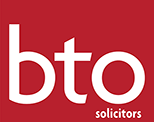11 January 2024
Section 3(1) of the Copyright, Designs and Patents Act 1988 (“the Act”) defines computer programs (and by extension, the program code therein) as “literary works” which are subject to copyright protection. This is the general starting point for computer program / software developers who should be live to the types of copyright that might subsist in their work (which could include the program code, graphical user interfaces, and databases).
However, the application of copyright law is rarely straightforward and it is worth bearing in mind the basic principles of the Act. These are outlined in the below summary, which offers a helpful guide for those trying to determine copyright ownership and the rights that might flow therefrom.
|
|
Subsistence of copyright
Copyright will only subsist if the work in question is original. The Act does not define the term “original” but in practical terms, to pass what is known as ‘the originality test’, the work must i) originate from the author and not be a duplication of another work and ii) be the author’s own intellectual creation.
If the work in question does not pass the originality test, copyright will not subsist therein. This means that the creator of a work that does not pass the originality test will be unable to i) profit from the work; ii) prove the subsistence of copyright if challenged; and iii) challenge any infringing work.
It is also worth noting that in the UK, copyright protection is not available for an idea, only for the expression of an idea. Though there is very little case law in relation to copyright in computer games, the English Court of Appeal did hold – in the case of Nova Productions Ltd v Mazooma Games Ltd[2007] EWCA – that for computer programs as a whole (which includes their preparatory design work) – “ideas” are not protected. As such, in this case, the defendant’s game (which emulated the claimant’s) was found not to have infringed the claimant’s game because it was only the general idea that was copied, not the coding required for it to function.
Establishing authorship
If it is established that a work does pass the originality test, then an assessment must be made in relation to i) who is the author and ii) who is the owner.
Per Section 9(1), the basic principle is that the author of a work is the person who created it. For a book, that will typically be the author; for software, that will typically be the software developer.
The Act contains special provisions for works of joint authorship which are defined as works produced by the collaboration of two or more “authors” in which the contribution of each author is not distinct from that of the other author(s). The significant point is that what is required is collaboration. This is not a defined term but broadly, collaboration is determined by considering the extent of each party’s contribution which must be relevant (i.e., a material contribution to the creation of the work). In these situations, the parties will typically (though not always) own the copyright in equal shares.
Computer generated works
The Act – at Section 178 - also deals with computer generated works, which are those generated by a computer in circumstances where there is “no human author of the work”. This is particularly relevant in the age of AI which is becoming increasingly sophisticated and where questions are emerging about whether an AI software (as a non-natural person) can own copyright. As the law stands, the answer to that is most likely ‘no’, because i) the duration of copyright is 70 years after the death of the author (as defined in Section 9) with the assumption being that authors are natural persons (only humans can die) and ii) AI programs cannot license, assign or sue (as least not yet).
As AI evolves, questions will continue to be asked about who owns the copyright in AI generated works (and in turn, who can then exploit that copyright) but the answer (for now at least) seems to be that the owner is a person or a legal entity, not the AI software itself.
Establishing ownership
Authorship is not the same as ownership, a distinction that can easily be overlooked. In some cases, the author of the work will also be the owner. However, in terms of Section 11(2) of the Act, where a computer program (or indeed any other literary, dramatic, musical or artistic work) is made by an employee in the course of employment, the first owner of any copyright is the employer, not the author, subject to any agreement to the contrary.
It is worth considering then whether the creator is an “employee” – that will be fact dependent but broadly depends on the terms of the contract of employment (which is informative but not determinative), but also how the parties understand the relationship and the terms of the contract as a whole – for example, place of work, hours of work, and degree of control.
Ownership of copyright becomes particularly relevant when it comes to exploitation of economic rights (i.e., profiting from the work). For example, the owner of the copyright can license the copyright for others for use subject to certain terms and conditions, or can also assign the copyright (i.e., transfer the ownership therein).
From a practical perspective, those developing computer programs and / or software should consider whether they are employees and pay careful attention to any intellectual property clauses in their contracts of employment as these may determine who ultimately profits from exploitation of the copyright.
Open source software
It is worth highlighting that different considerations arise in the case of open source software, which is software that is released under a license in which the copyright holder grants users the rights to use, study, change and distribute the software and its source code to third parties. Examples include Mozilla Firefox and VNC. The terms of these licenses tend to vary.
From a copyright perspective, the copyright is owned by the software developer (or his employer) and careful attention must be paid to the terms of the licenses, which often contain strict requirements about how the software is used and what constitutes copyright infringement.
Those creating open source software should ensure that the licenses are sufficiently drafted to prevent users using the software in ways that they do not envisage. Similarly, users of open source software should be mindful of the terms of the licenses and what they can and cannot do, to avoid committing copyright infringement.
If you have queries in relation to a computer program or software you are developing, or licensing, please contact our Intellectual Property team.
Lauren McFarlane, Associate: lmf@bto.co.uk / 0131 222 2939



